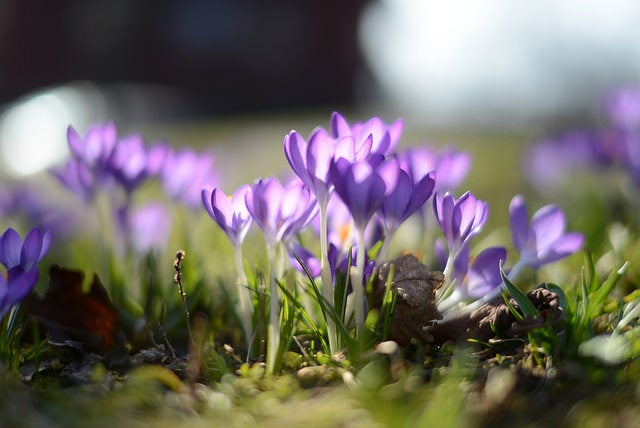After a long — and snowy — winter. Spring is finally here. There’s no better time than now to start gearing up for gardening season.

Photo courtesy of Melinda Myers
Planning ahead — and being realistic — are key to a successful garden, said Melinda Myers, host of “Melinda’s Garden Moment” and author of more than 20 gardening books.
News with a little more humanity
WPR’s “Wisconsin Today” newsletter keeps you connected to the state you love without feeling overwhelmed. No paywall. No agenda. No corporate filter.
“Think about every addition,” she said. “Not only do you have time to put it in the ground, but how do you manage it and what do you do with the end result?”
It’s easy to get carried away by the abundance of vibrant plant and vegetable offerings in catalogs during the winter months, but you’ll thank yourself for not overdoing it when the heat and mosquitos of summer set in, she said.
To help you prepare your garden, Myers shared a handful of tips to make the transition from winter to spring.
Rejuvenating Tired Perennial Beds
- Dig and divide perennials that have outgrown their location, fail to flower, flop over or no longer repeat bloom as they have in the past.
- Topdress the garden with an inch of compost, then use an auger bit to drill openings in the soil to aerate the soil and move the compost closer to the root zone of the plants.
- Mulch with shredded leaves, evergreen needles or other organic mulch, and manage weeds as soon as they are found.
Lawn Care
- As the snow and ice recede, remove any leaves and debris from the lawn and evaluate damage.
- Use a leaf rake to fluff up the grass as soon as the snow and ice melt — this helps reduce the risk of snow mold. If it has been a dry spring, water thoroughly to leach out de-icing salts.
- You can make your first fertilizer application around Memorial Day. Consider using a low nitrogen, slow release fertilizer.
Pruning Shrubs
- Always prune for a purpose.
- Summer flowering shrubs like Annabelle hydrangeas, spirea and potentilla can be pruned in late winter or early spring.
- Wait to prune lilac, forsythia and bridal wreath spirea until right after they bloom if you want flowers and need to reduce their size.
- The type of hydrangea influences if you need to prune, as well as when and how.
Soil Test
- Take soil samples for testing as soon as the soil thaws so you can implement recommendations this spring.
- New gardens and problem areas should be priorities, repeat tests every four to five years.
- Visit the University of Wisconsin-Madison soil testing lab for information on taking and submitting a sample for testing.
Creating New Gardens
- Always call 811 or file online with Diggers Hotline three days before any garden project that involves deep digging.
- Layout and edge — create a V-trench — the new garden bed.
- Kill or remove existing grass.
- Build a raised bed from soil with lasagna gardening — a no-dig, no-till organic gardening method that relies on layers of organic materials.
Wisconsin Public Radio, © Copyright 2025, Board of Regents of the University of Wisconsin System and Wisconsin Educational Communications Board.


